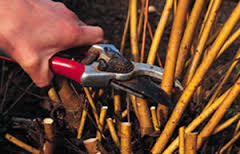Essential Guide to Pruning During Plant Dormancy
Plant dormancy is the resting phase of a plant’s annual life cycle. It typically occurs in response to environmental cues, such as shorter days or cooler temperatures. Dormancy is a survival strategy that allows plants to conserve energy and survive during harsh conditions. It’s characterized by a drop-off in energy use and primary plant functions—transpiration, photosynthesis, respiration, and so on.
The timing of plant dormancy varies depending on the plant species and the climate in which it is growing. Triggered by shortening day length and several deep frosts, plant dormancy in New England usually starts in late November and ends when plant buds swell in late March or early April—a stretch of about four months of relative calm for trees and shrubbery.

Benefits of Dormant Pruning
Absent important stressors, such as water shortages, insects, disease, and pests, this four-month period is an ideal time to prune plants. Some benefits of pruning during plant dormancy include:
- Reduced stress on the plant — When a plant is dormant, it is not actively growing and is therefore less stressed by pruning.
- Less sap loss — Dormant plants have less sap flowing through their systems, meaning there will be less sap loss when pruned.
- Reduced risk of disease — Dormant plants are less susceptible to pests and diseases, so there is less risk of spreading disease when you prune them.
- Better visibility of the plant structure — When a plant is dormant, it does not have any leaves, which makes it easier to see the plant’s structure and identify any problems that need to be addressed.
Set Specific Goals with Pruning
Setting goals for pruning, regardless of when you do it, is critical. In addition to the general benefits described above, pruning during dormancy can also be used to achieve specific things, such as controlling the size and shape of the plant, encouraging flowering and fruiting, improving air circulation and light penetration, and removing dead, diseased, or damaged branches.
Overall, pruning during dormancy is an excellent way to improve the health and look of your plants without causing them too much stress. Some examples of plants that you can prune during dormancy are deciduous trees and shrubs, fruit trees, rose vines, and ornamentals. Remember that some trees, such as maples and birches, can bleed sap if pruned in late winter or early spring. Prune these trees in the summer after their leaves have fallen.
Tips on Pruning Dormant Plants
Pruning dormant plants can be dicey. Make sure the tree is entirely dormant before pruning, meaning the leaves have fallen off and no new buds are forming. Also, make sure you cut just outside the branch collar. That’s the swollen area at the branch’s base where it meets the trunk or another branch. Cutting outside the collar helps the tree to seal the wound more quickly.
Below are additional pruning tips:
- Identify and remove any dead, diseased, or damaged branches. They can be a hazard and can also harbor pests and diseases.
- Prune to improve the tree’s structure and shape. This effort can involve removing crossing or rubbing branches, thinning out crowded branches, and raising the canopy.
- Make clean, sharp cuts. These types of cuts help trees heal quickly.
- Avoid pruning more than one-third of the tree’s crown at one time. Doing so can stress trees and make them more susceptible to pests and diseases.
- Use sharp, clean pruning tools. That helps you make clean cuts and reduces the risk of disease.
- Avoid pruning in wet weather. That can increase the risk of disease.
Pruning during dormancy is an excellent way to improve the health and look of your plants without causing them too much stress. But dormant pruning can be a challenge no matter when you do it. Following the pruning tips described above can help you beat this challenge. If you’re unsure whether or not a particular plant can be pruned during dormancy, consult a qualified arborist or horticulturist. You can also contact RITree for help with pruning your trees or shrubbery.